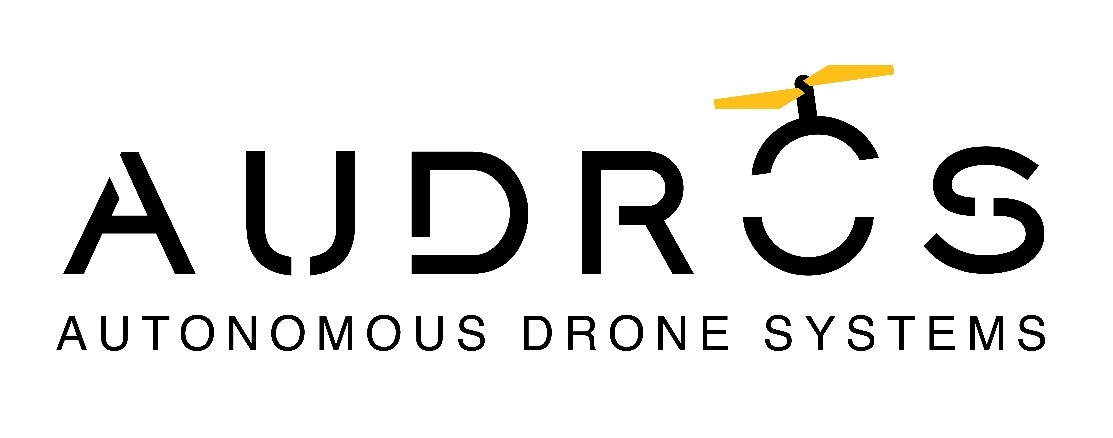
Objectives of the service
With the improving UAV technology, also the legislative framework is developing towards the enabling of the use of UAV’s in the automatic or autonomous BVLOS mode for professional purposes.
There is a limited number of hangars that UAV producers offer with their specific UAV. Only one competitor is offering off-board battery charging and management but this offer is limited to its own UAV and the robustness and size of the solution predetermine it for a limited number of large customers.
Two scenarios have been developed in close cooperation with a variety of professional stakeholders from the user communities.
Objective 1: The setup of the DEMO PROJECT service ANTIDRONE SOLUTION
A drone detection system needs to be complemented by an elimination effector - small arms, electronic jammers, trained animals, etc. The DronHub effector consists of a UAV installed in a hangar working in a 24/7 standby mode. Drone is equipped either with a net-gun or a deployable net. The Hangar and the UAV react automatically on the command issued by the drone detection system and starts immediately an elimination mission. The elimination mission consists of approaching enemy UAVs using online data from the detection system, taking over control by the onboard visual 3D system, approaching an effective distance, and eliminating the drone using a net to capture the enemy UAV. The Hangar could be installed in a nearby location to defend the area or facility and capture invading UAV’s transporting CBRNe dangerous payload.
Objective 2: The setup of the DEMO PROJECT service MOBILE SURVEILLANCE AND MONITORING SYSTEM for FIRST RESPONDERS
During large-scale events such as fires, chemical contamination (TIC), floods, search and rescue events, and similar, the first responders need to keep an overview of the situation in the field to deliver the fast and effective intervention and to minimize threats to own units and possibly other affected persons. Repeated delivery of situation maps containing visualised data collected using cameras and sensors for heat, radiation, gas detection and day and night visual data enables the commanders to keep an overview, inform the units about the situation development and make qualified decisions. These data also are needed for reporting and eventually training purposes. The data could be displayed and processed in the live regime using the GINA Software. Mobile hangar and UAV installed on a trailer could be used in an automatic/autonomous mode during real large-scale events with fire brigades.
The proposed innovation – integration of the hangar in the service provision chain, is changing the role of UAV services in the stakeholders’/customers’ processes. Autonomous or automatic functions increase the importance of these systems and open new potential fields of use.
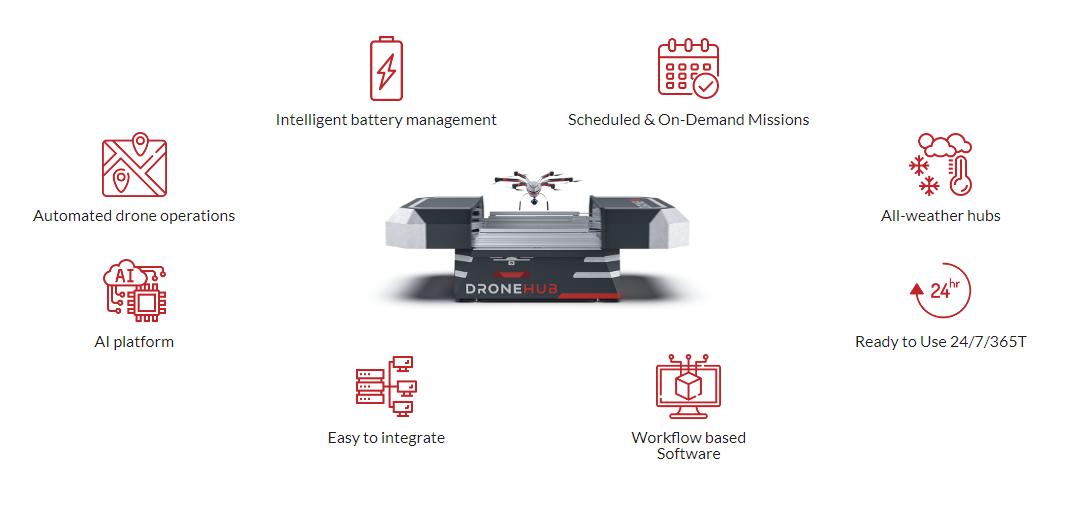
Users and their needs
The scenarios have been developed in close cooperation with a variety of professional stakeholders from the user communities.
The scope of users ranges from civilian and military suppliers of detection technologies for detection and defence against drones, through private security agencies, security forces and institutions with a special focus (prisons, private storage of hazardous substances or explosives, military storage management), nuclear security institutions, units and actors of integrated rescue corps, military units focused on chemical safety up to industrial enterprises in the field of chemistry and military production and regional administration.
The team was mainly consulting the scenarios with the named stakeholders in their home countries, the Czech Republic and Poland. But the vast majority of the stakeholders are well interlinked in the international defence communities which helps the team to measure the concepts on international benchmarks.
Service/ system concept
Scenario 1: First responder’s mobile service
Studying user needs and requirements it was confirmed that security, military and civil protection systems (users) do request a solution that enables autonomous supervision provided during large-scale events (fires, floods, other) delivering a set of data which do consist of:
-
Thermal imagery
-
Radioactivity monitoring
-
Monitoring of CWA and/or TIC
-
Day and Night vision – video or imagery transmission
The scheme is providing a description of the system, its components, and interoperability.

Scenario 2: Drone Hunter - Anti-Drone solution
Stakeholders from the drone defence industry offering UAV detection and elimination systems interviewed during FS presented the need for a solution that they have been discussing with potential clients. Also, the clients - users coming from the security services environment, police, and military but also from the private security services confirmed that need and helped the team to define the technical requirements.
The Drone Hunter scenario is offering prevention and protection by using a physical barrier as the technological tool, a drone physical capture device (drone-mounted net cannon snags other drones). It always will be a part of a detection & elimination system where the Drone Hunter is being used as one of a complex system of anti-drone measures using multiple effectors, or as the sole device.
The scheme is providing a description of the system, its components, and interoperability.
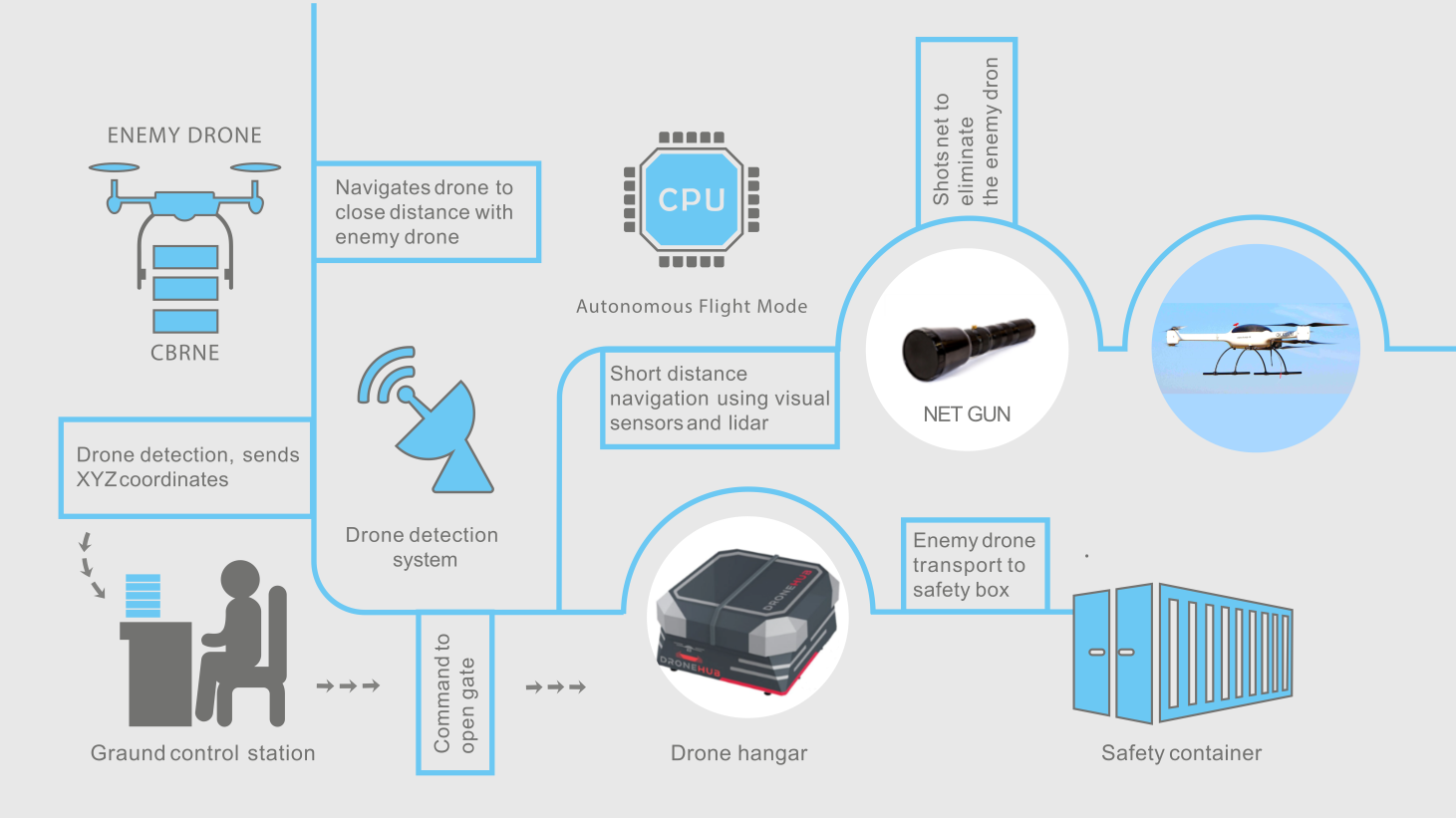
Space Added Value
GNSS – Global Navigation Systems – is used for UAV flight navigation, and geofencing (GPS, Galileo, Glonass chips. In the future when available Galileo PRS services, will be integrated for approved users.
EO – Earth observation – is used in large-scale events as the base for basic situation mapping in the front, weather data are used for flight management;
SAT-COM – Satellite Communication is used in remote areas for data transmission.
Current Status
The project has been completed successfully in January 2023.
The Drone-Hangar system is developed to a stage of industry-proven technology which has been deployed in the real environment.
The solution was successfully tested during internal tests and demonstration events with potential clients.

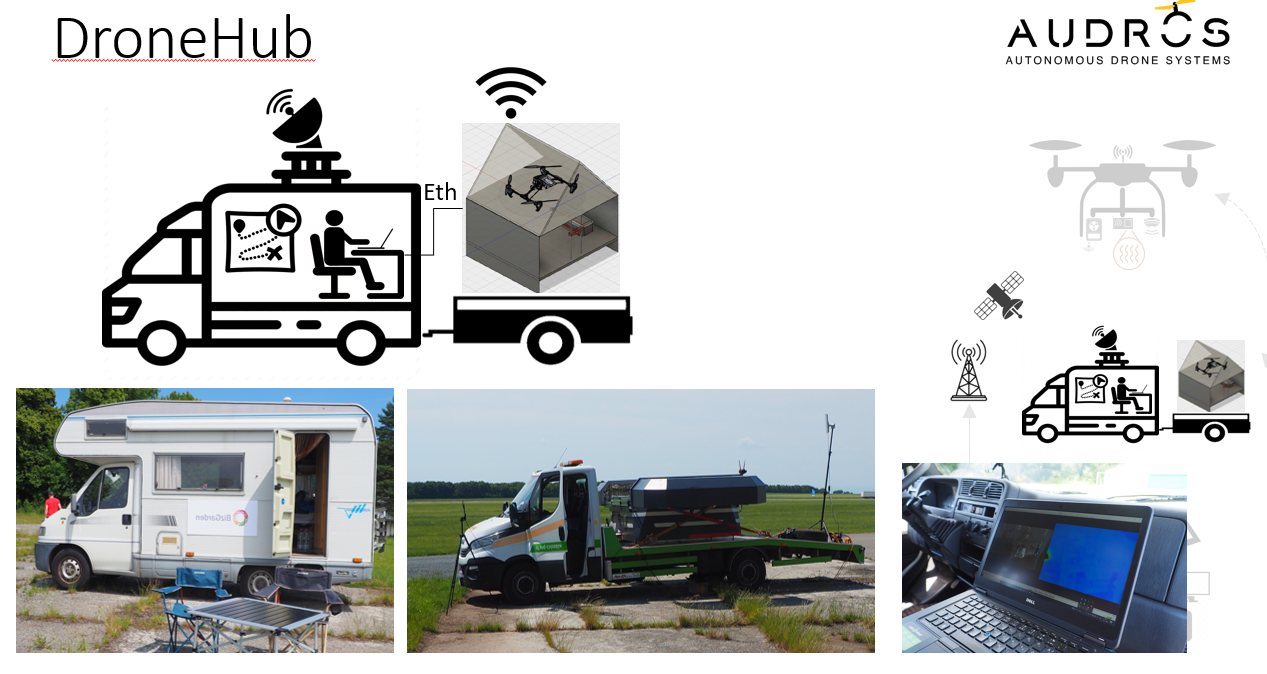
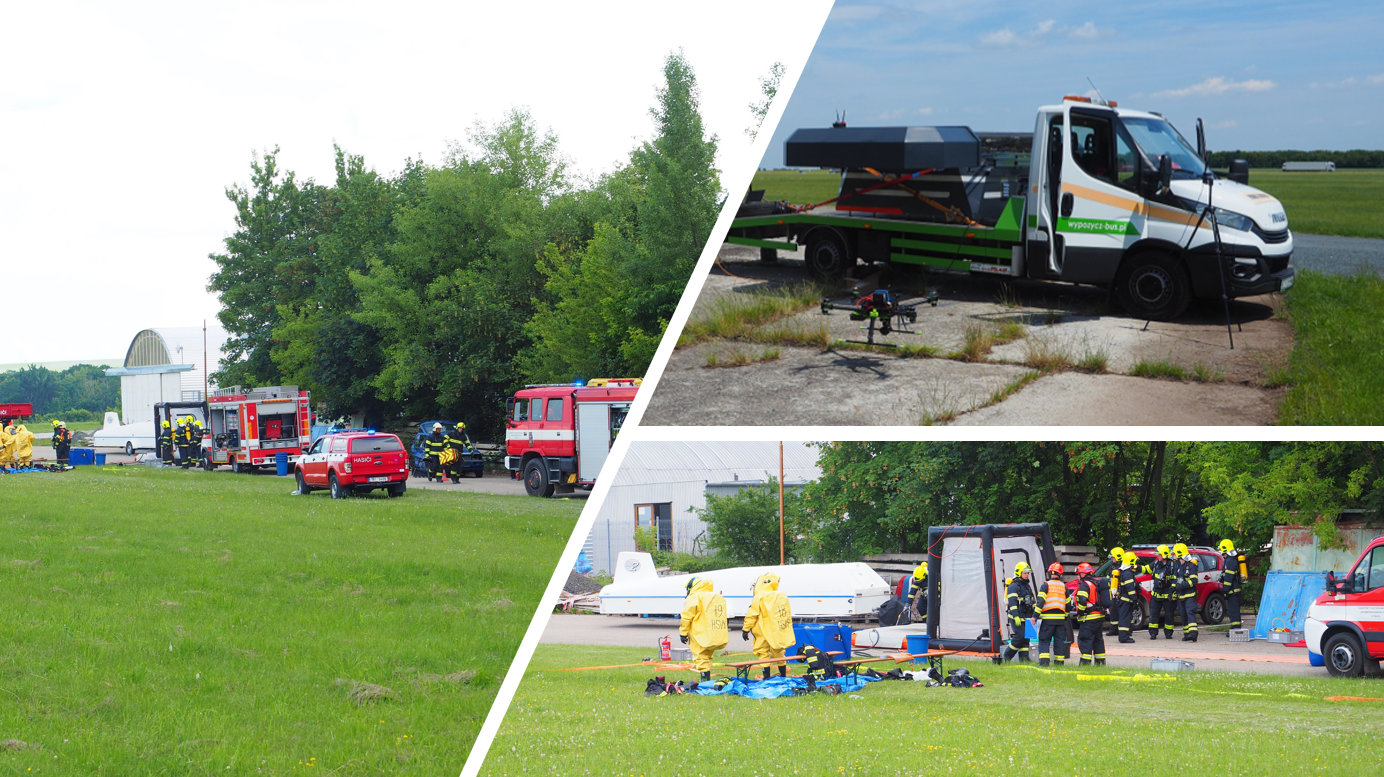
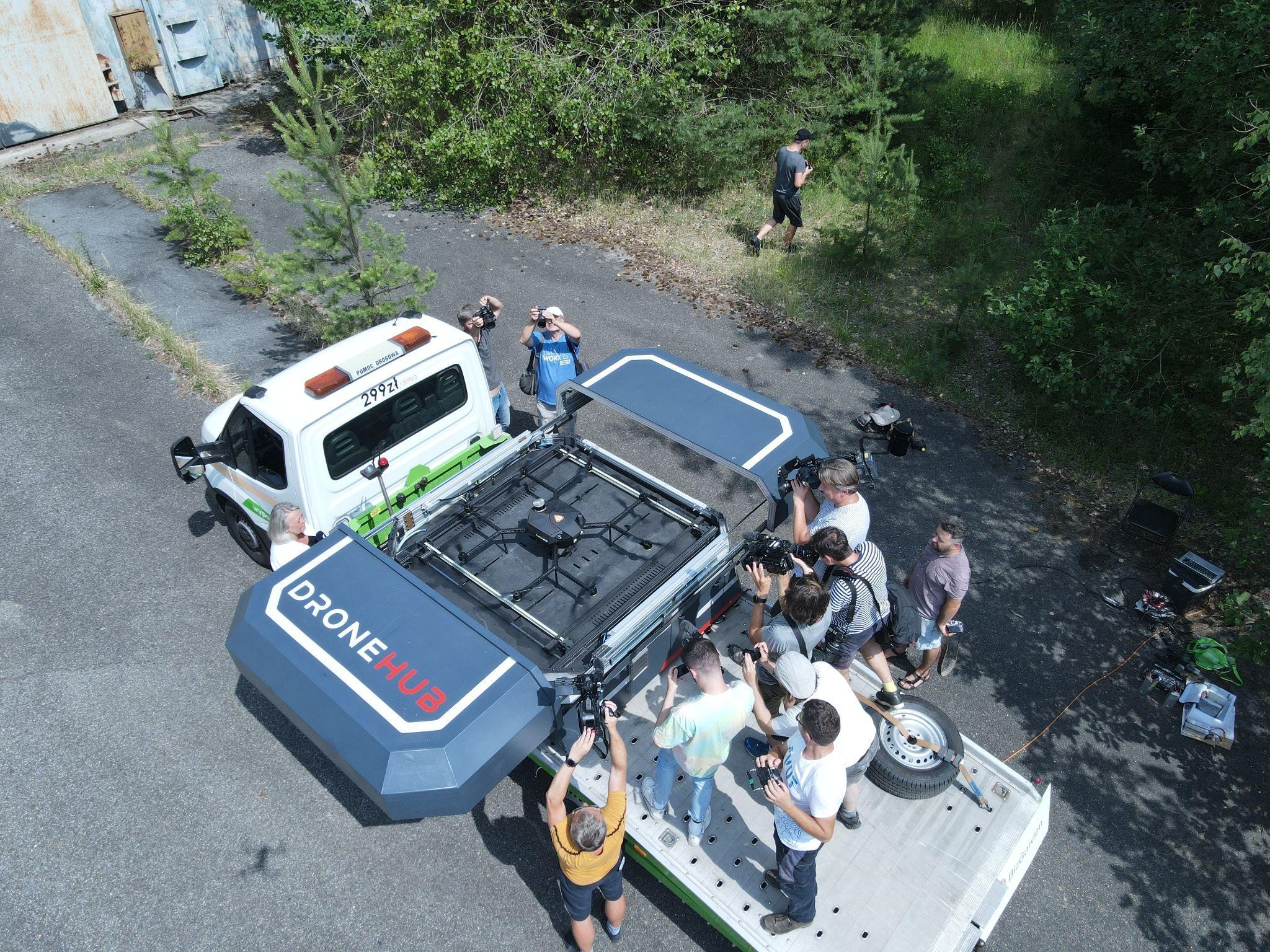
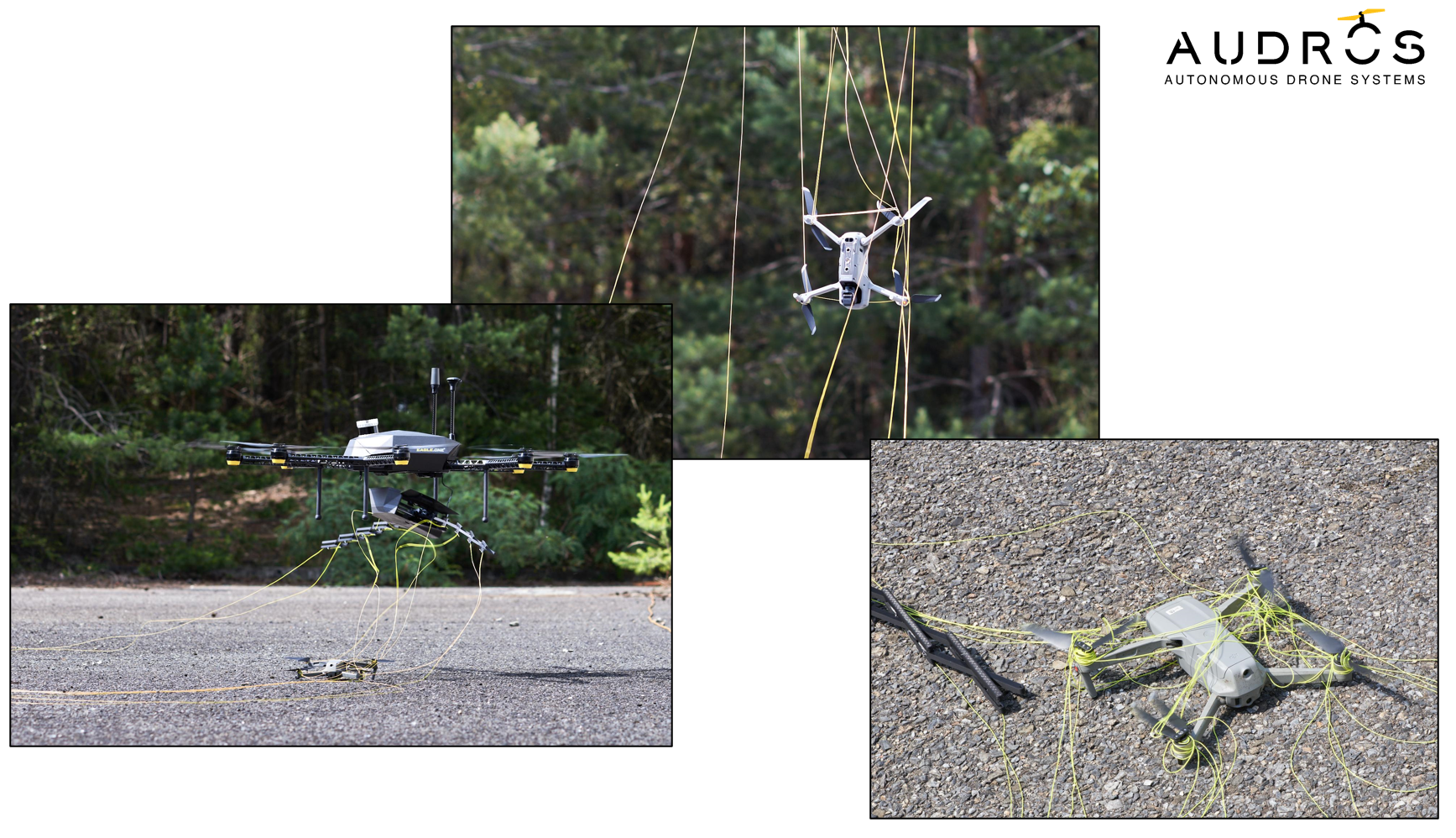
The solution is ready to be placed on the market.
The first contract for the system delivery was closed at the beginning of 2023.








